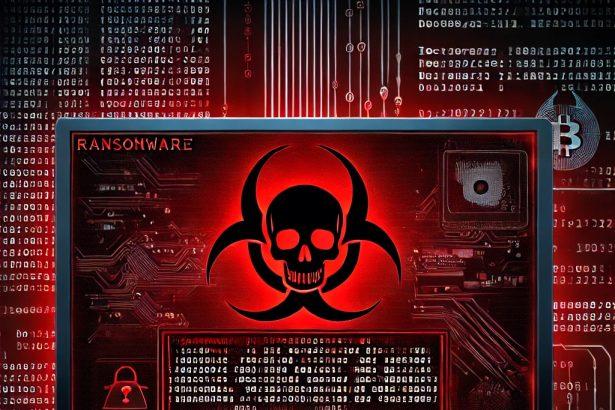Se7en ransomware is a dangerous file-encrypting malware that targets both individuals and organizations. It appends the .se7en extension to encrypted files and leaves a ransom note demanding payment. Based on the Babuk ransomware source code, Se7en not only locks data but also threatens to leak stolen files if demands aren’t met. This dual-pronged approach significantly increases the pressure on victims.
Threat Overview
Se7en ransomware encrypts files on the infected system and attempts to extort victims by threatening to release the stolen data. Victims are instructed to contact the attackers through TOX Messenger to begin ransom negotiations.
Se7en Ransomware Summary
| Category | Details |
|---|---|
| Threat Type | Ransomware, Crypto Virus, File Locker |
| Encrypted File Extension | .se7en |
| Ransom Note Filename | How To Restore Your Files.txt |
| Contact Method | TOX Messenger |
| Detection Names | Win32:MalwareX-gen [Ransom], Generic.Ransom.Babuk, A Variant Of Win32/Filecoder.Babyk.A, HEUR:Trojan-Ransom.Win32.Generic, Trojan:Win32/Babuk |
| Symptoms of Infection | Files encrypted with .se7en extension; ransom note dropped; programs fail to open files |
| Damage | File encryption, data theft, threat of public data exposure |
| Distribution Methods | Malicious email attachments, pirated software, fake technical support, torrent downloads, malvertising |
| Danger Level | High |
| Removal Tool | SpyHunter |
In-Depth Threat Analysis
How Did I Get Infected?
Se7en ransomware often spreads through:
- Malicious email attachments posing as invoices or legal documents
- Cracked software downloads and illegal key generators
- Fake technical support sites urging users to download software
- Torrent platforms distributing repackaged installers
- Online ads leading to compromised websites or drive-by downloads
Once the file is opened, the ransomware silently encrypts the system’s files and demands payment through a ransom note.
What Does It Do?
Se7en encrypts the victim’s files using a secure algorithm and appends the .se7en extension. A ransom note named How To Restore Your Files.txt is placed on the desktop and in affected directories. The message claims that the data has been exfiltrated and will be published if the victim does not comply with the payment demand. Communication is conducted via TOX Messenger.
Should You Be Worried?
Yes. This ransomware is a severe threat. Beyond the file encryption, the claim of data theft can pose long-term risks such as identity fraud, regulatory penalties for businesses, and permanent data loss. There is no known free decryption method, and paying the ransom does not guarantee full data restoration or data privacy. Removing the malware is the first and most critical step.
Ransom Note Text
vbnetCopyEdit***************************************************
We are the se7en Ransomware Team.
Your company Servers are locked and Data has been taken to our servers. This is serious.
Good news:
- your server system and data will be restored by our Decryption Tool, we support trial decryption to prove that your files can be decrypted;
- for now, your data is secured and safely stored on our server;
- nobody in the world is aware about the data leak from your company except you and se7en Ransomware team;
- we provide free trial decryption for files smaller than 1MB. If anyone claims they can decrypt our files, you can ask them to try to decrypt a file larger than 1MB.
FAQs:
Want to go to authorities for protection?
- Seeking their help will only make the situation worse;
They will try to prevent you from negotiating with us;
Manual Ransomware Removal Process
Important: Manual removal is recommended only for experienced users, as incorrect actions can lead to data loss or incomplete removal of the ransomware. If unsure, consider the SpyHunter Removal Method for a guided, automated solution.
Step 1: Disconnect from the Internet
- Immediately disable Wi-Fi or unplug the Ethernet cable to prevent the ransomware from communicating with remote servers.
- This can prevent additional encryption or further infections.
Step 2: Boot into Safe Mode
For Windows Users
- Windows 10/11:
- Press Windows + R, type
msconfig, and press Enter. - Under the Boot tab, select Safe boot and check Network.
- Click Apply, then OK, and restart your PC.
- Press Windows + R, type
- Windows 7/8:
- Restart your PC and press F8 repeatedly before Windows starts.
- Select Safe Mode with Networking and press Enter.
For Mac Users
- Restart your Mac and hold the Shift key immediately after the startup chime.
- Release the key when the Apple logo appears.
- Your Mac will boot in Safe Mode.
Step 3: Identify and Terminate Malicious Processes
Windows
- Open Task Manager by pressing Ctrl + Shift + Esc.
- Look for unusual processes consuming high CPU or memory.
- Right-click on the suspicious process and select End Task.
Mac
- Open Activity Monitor (Finder > Applications > Utilities > Activity Monitor).
- Look for unknown or high-resource-consuming processes.
- Select the suspicious process and click Force Quit.
Step 4: Delete Ransomware Files
Windows
- Open File Explorer and navigate to:
C:\Users\[Your Username]\AppData\LocalC:\Users\[Your Username]\AppData\RoamingC:\Windows\System32
- Identify and delete suspicious files (randomly named or recently modified items).
- Clear temporary files:
- Press Windows + R, type
%temp%, and hit Enter. - Delete all files in the Temp folder.
- Press Windows + R, type
Mac
- Open Finder and select Go > Go to Folder.
- Type
~/Library/Application Supportand check for unfamiliar files or folders. - Remove unknown
.plistfiles from~/Library/LaunchAgents.
Step 5: Remove Ransomware Entries from Registry or System Settings
Windows
- Press Windows + R, type
regedit, and hit Enter. - Navigate to:
HKEY_CURRENT_USER\SoftwareHKEY_LOCAL_MACHINE\Software
- Identify and delete ransomware-related registry entries.
Mac
- Open System Preferences > Users & Groups.
- Select the Login Items tab and remove any unknown startup programs.
- Check
~/Library/Preferencesfor malicious settings.
Step 6: Restore System Using a Backup or Restore Point
Windows
- Press Windows + R, type
rstrui, and press Enter. - Choose a restore point from before the infection and proceed.
Mac
- Restart your Mac and enter macOS Utilities by holding Command + R.
- Select Restore from Time Machine Backup and restore a safe backup.
Step 7: Attempt to Decrypt Files
- Check No More Ransom (www.nomoreransom.org) for available decryption tools.
- If unavailable, restore files from backups.
Automated Ransomware Removal with SpyHunter
If manual removal is too complex or risky, SpyHunter offers a safer, automated method for detecting and removing ransomware.
Step 1: Download SpyHunter
- Get SpyHunter from the official Enigma Software website.
Step 2: Install SpyHunter
- Open the downloaded file (
SpyHunter-Installer.exeor.dmgfor Mac users). - Follow the installation prompts.
- Launch SpyHunter upon completion.
Step 3: Run a Full System Scan
- Click Start Scan Now to detect malware and ransomware.
- Wait for the scan to complete and review detected threats.
Step 4: Remove Detected Ransomware
- Click Fix Threats to remove identified ransomware components.
- SpyHunter will clean your system automatically.
Step 5: SpyHunter’s Custom Malware HelpDesk
- If ransomware persists, use SpyHunter’s Malware HelpDesk for custom malware fixes.
Step 6: Restore Files
- Use backups stored on external drives or cloud storage.
- If no backup is available, check No More Ransom for decryption tools.
Preventing Future Ransomware Attacks
- Keep backups: Use cloud storage or an external hard drive.
- Install a reliable security tool: SpyHunter offers real-time protection against malware.
- Enable Windows Defender or Mac security features for additional protection.
- Avoid phishing emails and unknown attachments.
- Regularly update Windows, macOS, and installed applications.
Conclusion
Se7en ransomware poses a high-level threat due to its file-locking and data exfiltration capabilities. Victims are strongly advised against paying the ransom, as it does not ensure data recovery or privacy. Immediate removal using a reputable anti-malware tool like SpyHunter is recommended to halt further system damage and security risks.




